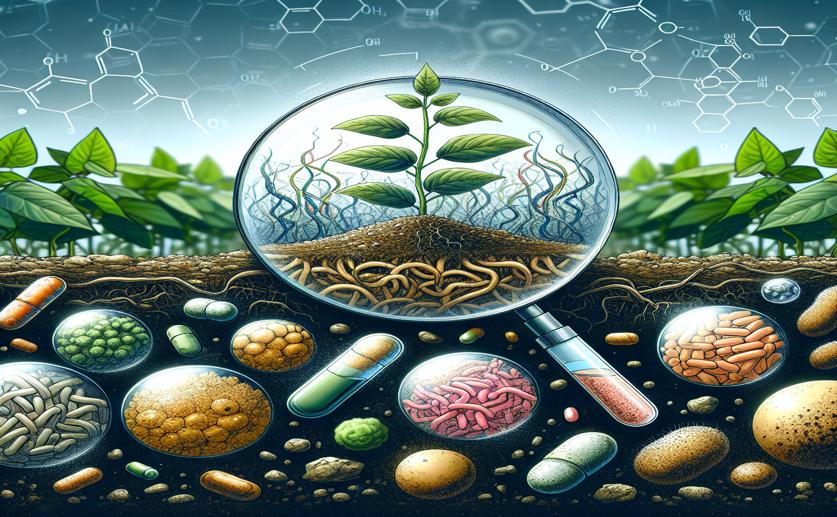
Exploring Soil Bacteria for Compounds to Fight Soybean Diseases
Jim Crocker
2nd March, 2024

Image Source: Natural Science News, 2024
Key Findings
- Amazon soil bacteria can produce substances to fight crop fungi
- Five strains were found to inhibit harmful soybean pathogens
- Study highlights need to preserve Amazon for agriculture benefits
AgricultureBiotechPlant Science
References
Main Study
1) Accessing the specialized metabolome of actinobacteria from the bulk soil of Paullinia cupana Mart. on the Brazilian Amazon: a promising source of bioactive compounds against soybean phytopathogens.
Published 29th February, 2024
https://doi.org/10.1007/s42770-024-01286-1
Related Studies
2) Status of Fungicide Resistance and Physiological Characterization of Tebuconazole Resistance in Rhizocotonia solani in Sichuan Province, China.
3) Discovery of Niphimycin C from Streptomyces yongxingensis sp. nov. as a Promising Agrochemical Fungicide for Controlling Banana Fusarium Wilt by Destroying the Mitochondrial Structure and Function.
4) Plant microbiomes harbor potential to promote nutrient turnover in impoverished substrates of a Brazilian biodiversity hotspot.
5) Natural Product-Based Crop Protection Compounds─Origins and Future Prospects.



 4th February, 2024 | Jim Crocker
4th February, 2024 | Jim Crocker